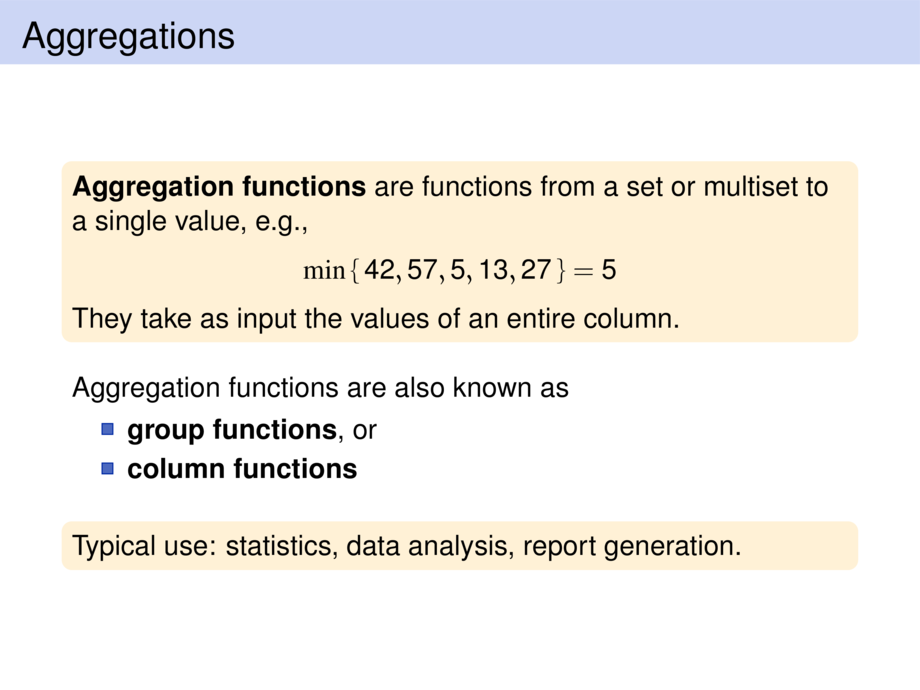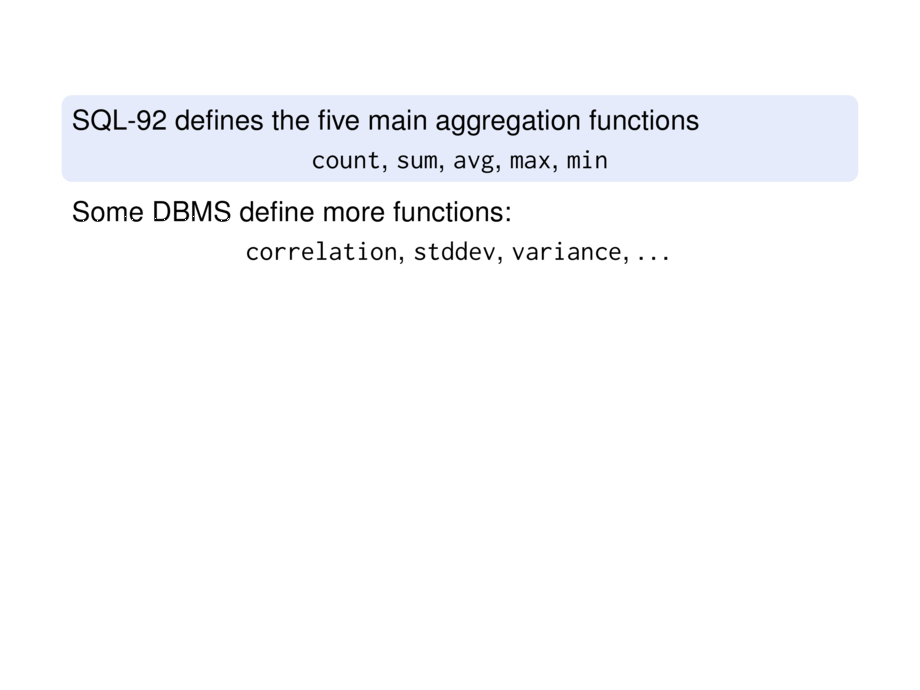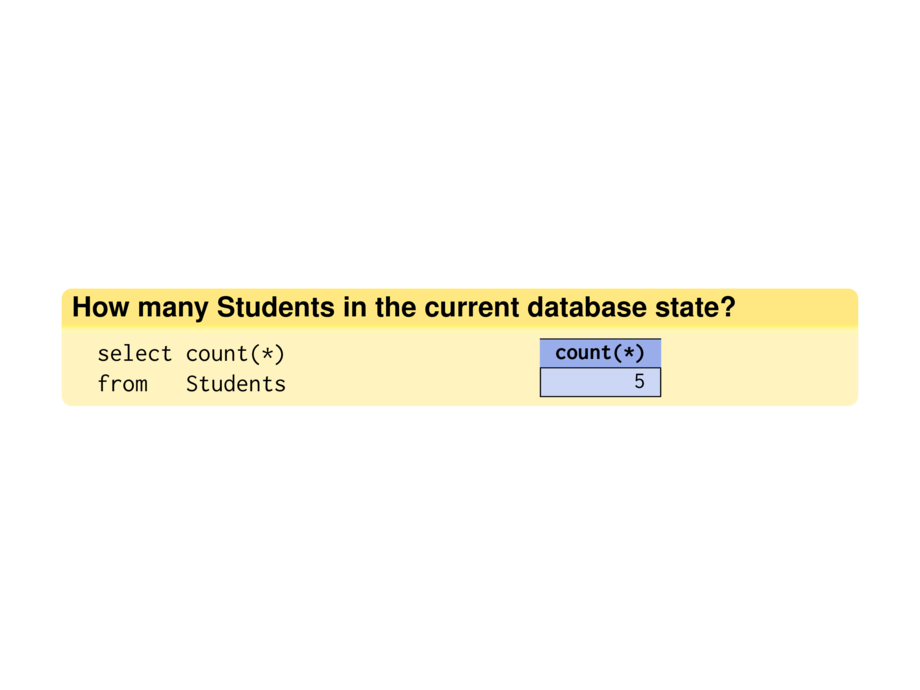



































































































138/224
\begin{frame}
\frametitle{Aggregations}
\begin{block}{}
SQL-92 defines the five main aggregation functions
\begin{tcenter}
\sql{count}, \sql{sum}, \sql{avg}, \sql{max}, \sql{min}
\end{tcenter}
\end{block}
Some DBMS define more functions:
\begin{tcenter}
\sql{correlation}, \sql{stddev}, \sql{variance}, \dots
\end{tcenter}
\pause\medskip
\countStudents
\pause
\begin{goal}{}
Some aggregation functions are sensitive to \emph{duplicates}:
\begin{tcenter}
\sql{sum}, \sql{count}, \sql{avg}\;,
\end{tcenter}
some are insensitive:
\begin{tcenter}
\sql{min}, \sql{max}
\end{tcenter}
\end{goal}
SQL allows to explicitly request to ignore duplicates, e.g.:
\begin{tcenter}
$\cdots$ \sql{count(distinct A)} $\cdots$
\end{tcenter}
% \item Any \emph{commutative} and \emph{associative} binary
% operator with a neutral element can be extended (``\emph{lifted}'')
% to work on set-valued arguments (\emph{e.g.}, \sql{sum} corresponds
% to \sql{+}).
% \end{itemize}
%
% \begin{quiz}{\textwidth}{Commutative and associative, neutral element?}
% Why do we require these properties of the operators?
% \end{quiz}
\end{frame}

